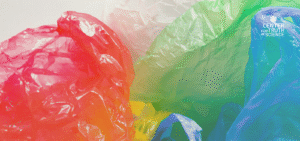
The economic impacts of plastics litigation extend far beyond the courtroom. As our analysis of 67 recent cases tracked through the Plastics Litigation Tracker (Plastics Litigation Tracker, 2025) demonstrates, this wave of legal action creates significant ripple effects throughout markets, supply chains, and innovation ecosystems. Companies face not just litigation costs, but potentially transformative changes to their business models, while investors, consumers, and innovators navigate an increasingly uncertain landscape.
The Economic Scope of Plastics Litigation
To understand the full economic impact of plastics litigation, we must first grasp its scale. Our analysis shows:
- Industry defendants face 41 cases (61% of the total)
- Injunctive relief is sought in 32 cases (48%)
- Monetary damages are sought in 19 cases (28%)
- Disgorgement of profits is requested in 4 cases (6%)
These figures represent substantial economic exposure. But the true impact lies in the structural market changes that litigation either drives directly or accelerates indirectly.
Injunctive Relief: The Market Disruptor
The high percentage of cases seeking injunctive relief (48%) is particularly significant from an economic perspective. Unlike monetary damages, which companies can typically absorb as a cost of doing business, injunctions can force immediate operational changes with far-reaching consequences.
Types of Injunctive Relief Sought
Our analysis reveals several common types of injunctive relief sought in plastics cases:
- Marketing Prohibitions: Restrictions on specific claims (e.g., “recyclable,” “environmentally friendly”)
- Product Reformulation: Requirements to change product composition or packaging
- Disclosure Mandates: Obligations to provide specific information about plastic content or environmental impact
- Process Changes: Modifications to manufacturing, distribution, or disposal processes
The economic significance of injunctive relief cannot be overstated. While monetary damages represent a one-time cost, injunctions can require fundamental business model changes that affect ongoing operations, supply chains, and competitive positioning.
The Innovation Paradox
Perhaps the most significant economic impact of plastics litigation lies in its complex effects on innovation. Our analysis reveals a paradox: litigation simultaneously creates both incentives and disincentives for innovation in sustainable materials.
Innovation Incentives Created by Litigation
- Alternatives Development: Litigation risk accelerates research into plastic alternatives and sustainable packaging solutions
- Process Improvements: Companies invest in improved manufacturing and recycling processes to mitigate liability
- Verification Technologies: New testing and tracking systems emerge to verify environmental claims
Innovation Disincentives Created by Litigation
- Regulatory Uncertainty: Companies hesitate to invest in novel technologies when compliance standards remain unclear
- Liability Concerns: Fear of establishing new liability theories through innovative approaches creates status quo bias
- Defensive Posturing: Resources directed to litigation defense become unavailable for R&D investment
- Disclosure Hesitancy: Companies become reluctant to make environmental claims about genuinely improved products due to litigation risk
Compliance Cost Distribution: A Patchwork Problem
One of the most significant economic inefficiencies created by plastics litigation stems from jurisdictional inconsistency. Companies must navigate different standards across federal courts and various state jurisdictions, each with potentially different interpretations of what constitutes appropriate environmental claims or acceptable plastic practices.
Our economic analysis suggests that this uncertainty creates significant inefficiencies. Companies may:
- Maintain redundant packaging systems for different jurisdictions
- Over-invest in compliance for risk mitigation
- Delay product innovations pending legal clarity
- Pass compliance costs to consumers through pricing
A more coherent national approach could potentially reduce these inefficiencies while maintaining appropriate environmental safeguards.
Market Concentration Effects
Our analysis also indicates that plastics litigation may drive market concentration in affected industries. Larger companies typically have:
- Greater resources to absorb litigation costs
- More sophisticated compliance infrastructure
- Better ability to negotiate favorable settlements
- More vertical integration to control liability throughout the supply chain
This suggests that litigation may inadvertently favor larger market participants, potentially reducing competition and innovation that might otherwise come from smaller, more nimble companies.
Supply Chain Ripple Effects
The economic impact of plastics litigation extends throughout supply chains. Our analysis identifies several key patterns:
- Contract Renegotiation: Companies increasingly seek indemnification from suppliers regarding plastic content and claims
- Certification Demands: Verification and certification requirements flow upstream to raw material suppliers
- Regionalization Pressures: Compliance complexity encourages more regionalized supply chains aligned with regulatory boundaries
- Material Substitution: Litigation risks accelerate substitution of alternative materials, affecting commodity markets
Conclusion: Balancing Protection and Progress
Plastics litigation has emerged as a powerful force for change in markets. However, litigation alone creates economic inefficiencies that may undermine broader sustainability goals. A more balanced approach would recognize legitimate environmental concerns while creating clearer pathways for innovation and transition.
In the final article of our series, we’ll explore policy approaches that might better address plastic concerns beyond litigation, creating more coherent frameworks at the intersection of science, justice, and economy.
This is the third installment in a four-part series examining the current landscape of plastics litigation in America. The Center for Truth in Science is committed to promoting evidence-based solutions to complex challenges at the intersection of science, justice, and the economy.
Join us for Part 4 of our series: Beyond Litigation: Policy Solutions at the Intersection of Science, Justice, and Economy.
References
Plastics Litigation Tracker. (2025). State Impact Center. https://plasticslitigationtracker.org/ (accessed May 2025).
Swartz v. Coca-Cola Co., No. 3:21-cv-04643 (N.D. Cal. filed 2021).
Swartz v. Coca-Cola Co., Stipulation of Dismissal, No. 3:21-cv-04643 (N.D. Cal. Apr. 1, 2025).